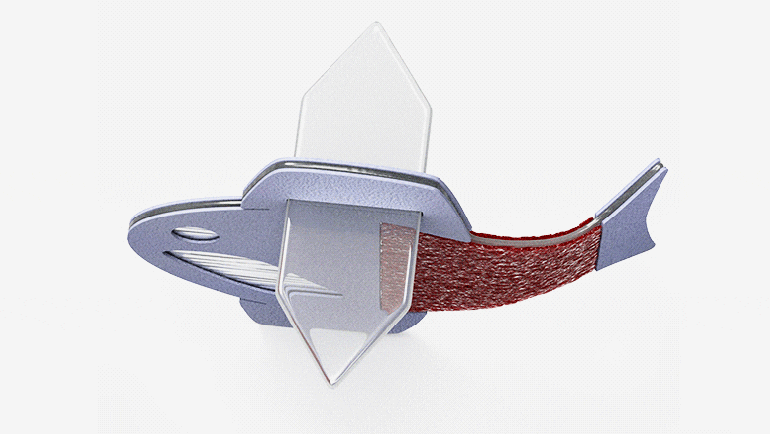A research team from Harvard and Emory Universities in the Americas has built the first biologically hybrid fish from heart cells derived from human stem cells, bringing researchers one step closer to developing a more complex artificial muscle pump that can be used to study heart disease.
strange kind of creature
Hybrid living entities are devices that perform mechanical functions with biological components, and according to the study - published in the journal "Science" on February 10, this vital device is inspired by the shape of the zebrafish and its swimming movement.
And that artificial fish contains two layers of cardiac muscle cells, one on each side of the tail fin, when one side contracts, it gives a signal that passes through a minute protein channel to the other to expand, and this stretching causes a signal for the other side to expand, and so the expansion and contraction continues On both sides periodically.
According to the new study, this fish represents a fully automated system that pushes the artificial fish to swim more than 100 consecutive days without stopping.
Hybrid industrial fish mimics two key regulatory processes for our hearts (Harvard University)
In arriving at these findings, the hybrid artificial fish mimics two major regulatory processes of our human hearts;
The first is its ability to work automatically without the need for conscious intervention, as your heart does not beat because you want to and cannot prevent it from beating, and the second is that this process (mechanical movement) begins with electrical signals.
children's hearts
What is interesting about the results of this study - according to an official statement issued by Harvard University - is that these biologically hybrid fish improve with age, as the capacity of muscle contraction, maximum swimming speed and muscle coordination increased during the first month with the maturation of heart muscle cells, and by the beginning of the fourth month, these fish reached Hybrid biomes lead to swimming speeds and efficiency comparable to real zebrafish in the water.
This unique mechanism is the closest to the working pattern of the human heart (Harvard-Urick Alert)
According to the new study, this unique mechanism is the closest to the working pattern of the human heart.
Most of the previous work in this area tried to build and replicate heart cells, but here the team was able to build an automated system with a complex goal.
The researchers hope that these results will be the first steps towards building a fully functioning heart, so that it can be used in cases of cardiac anomalies in some newborn babies.

